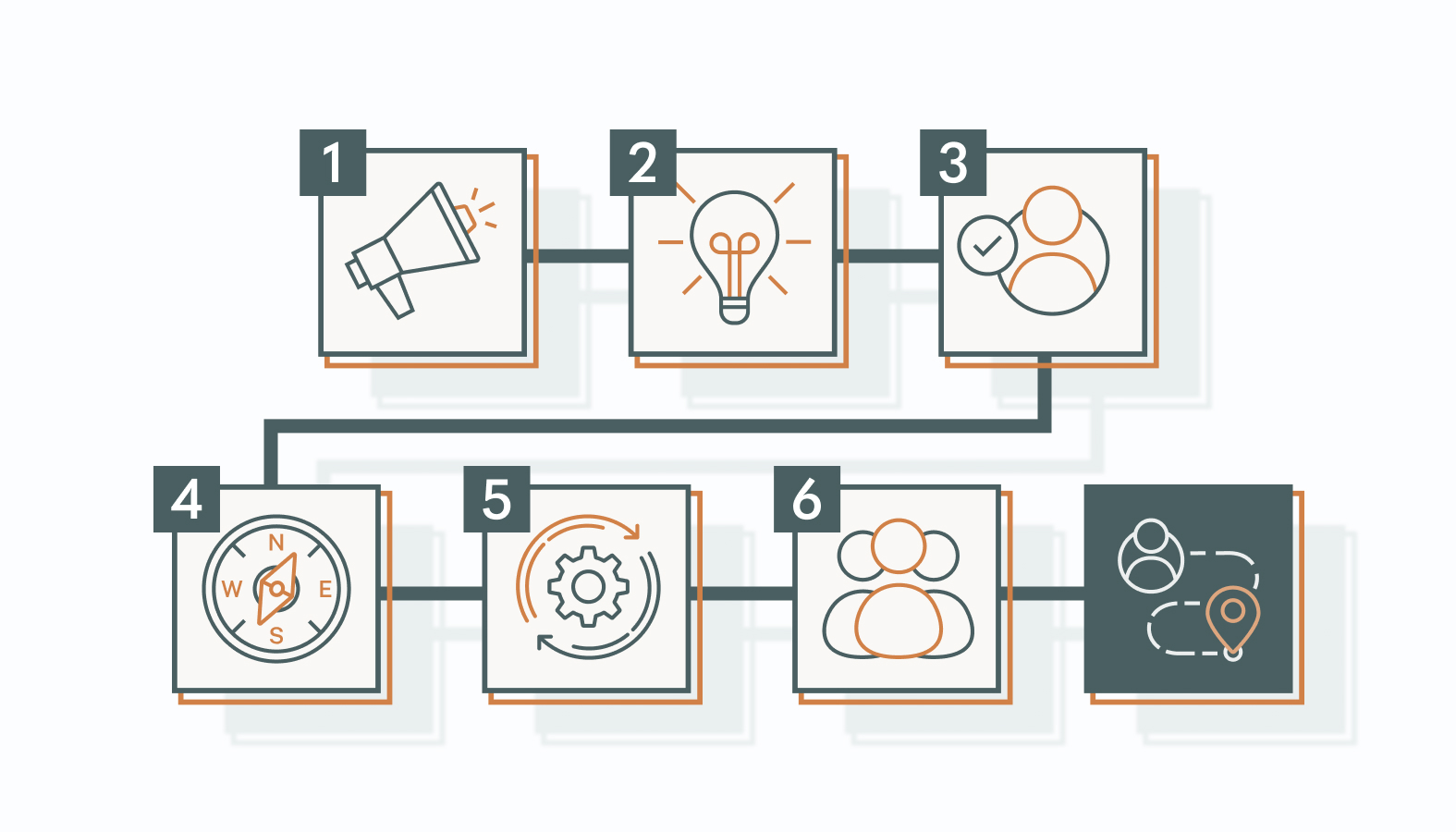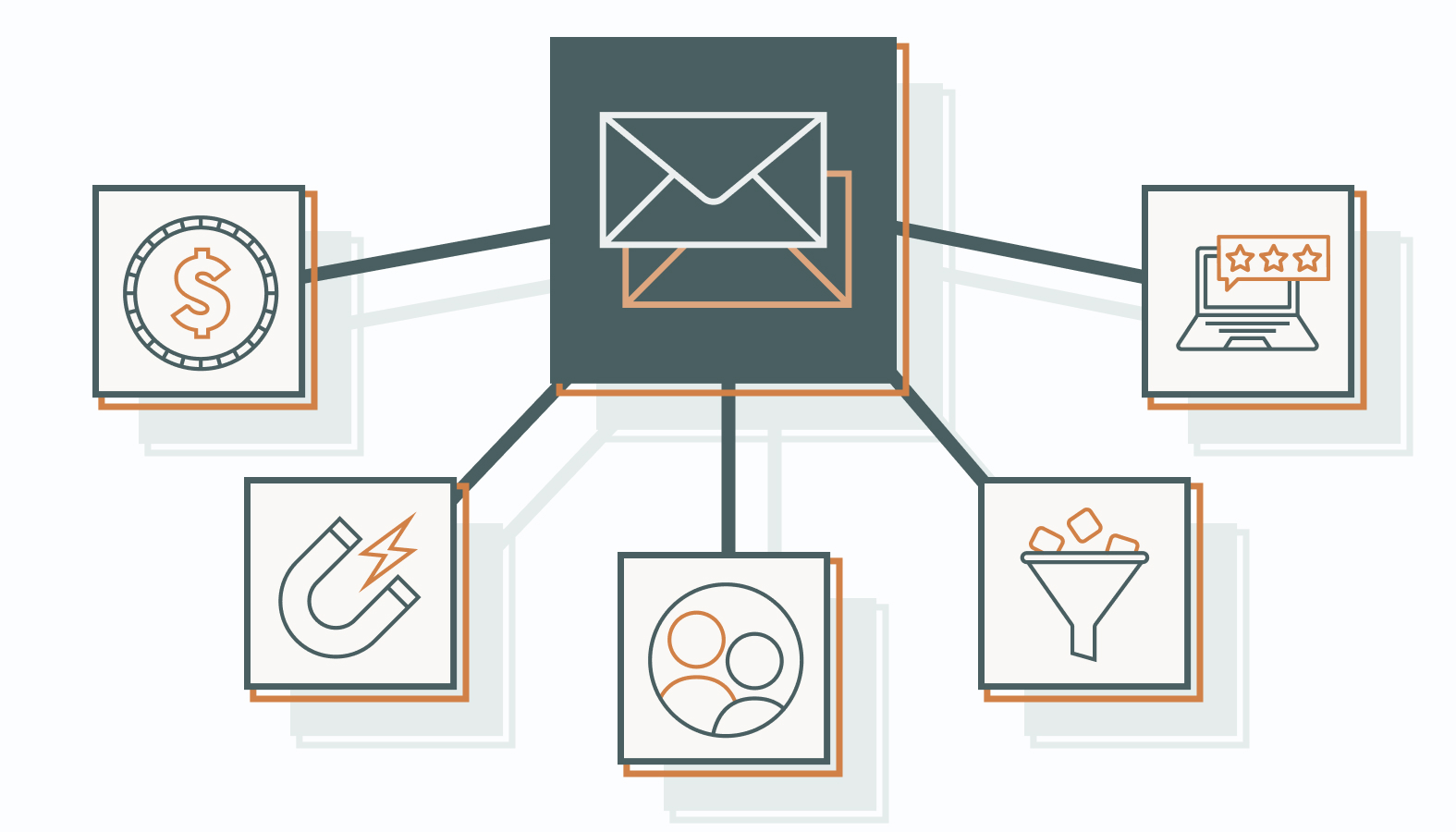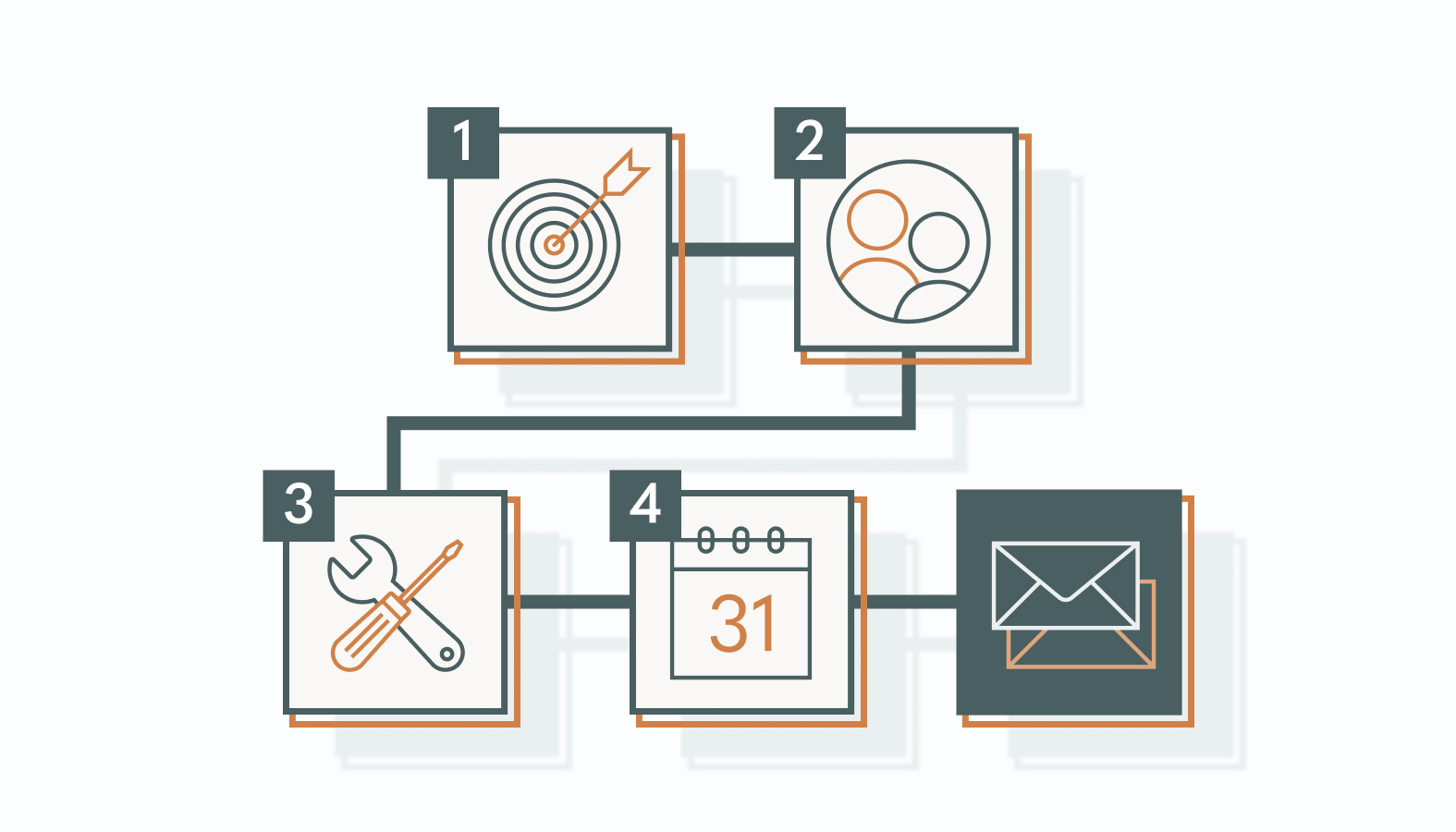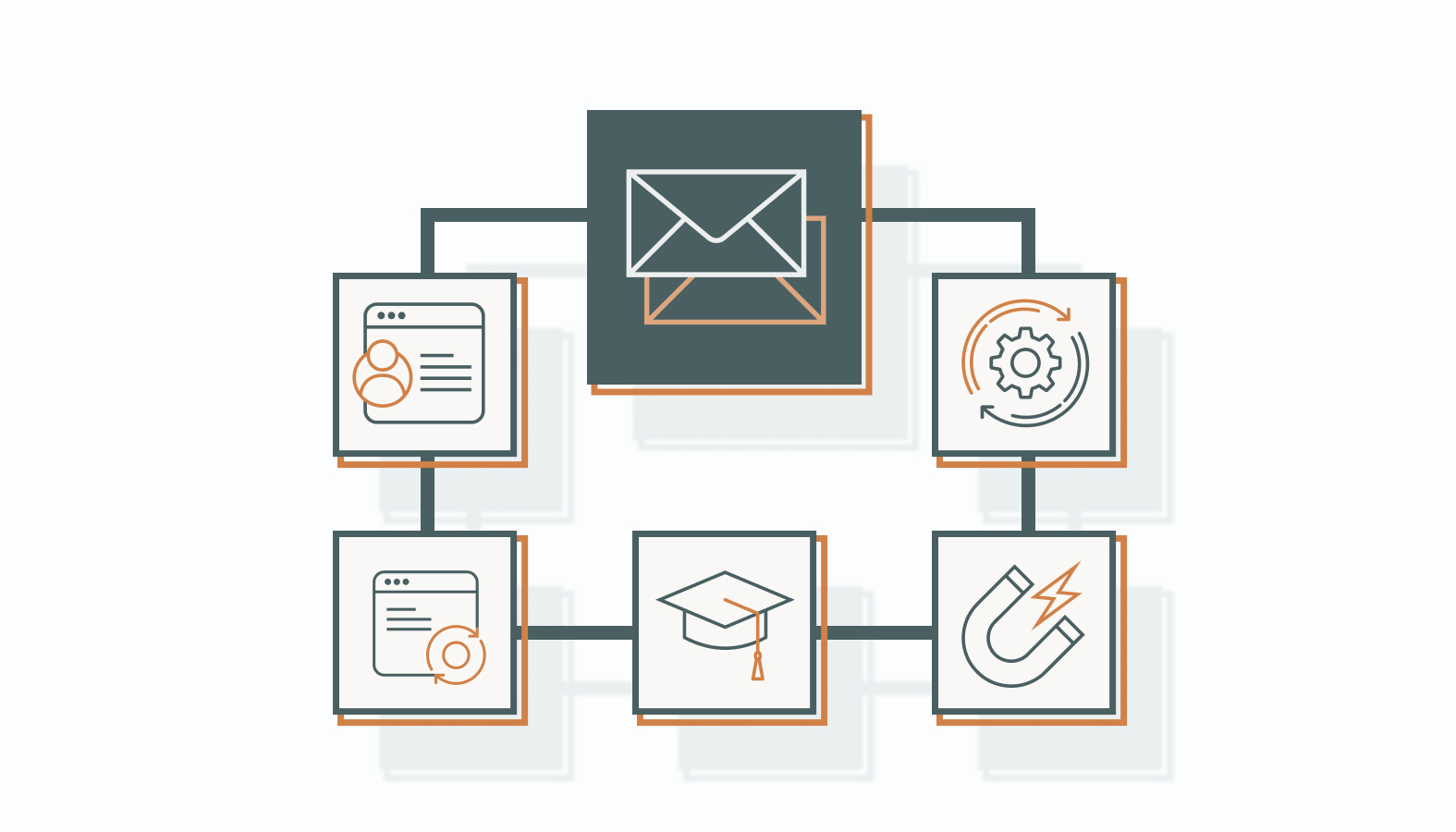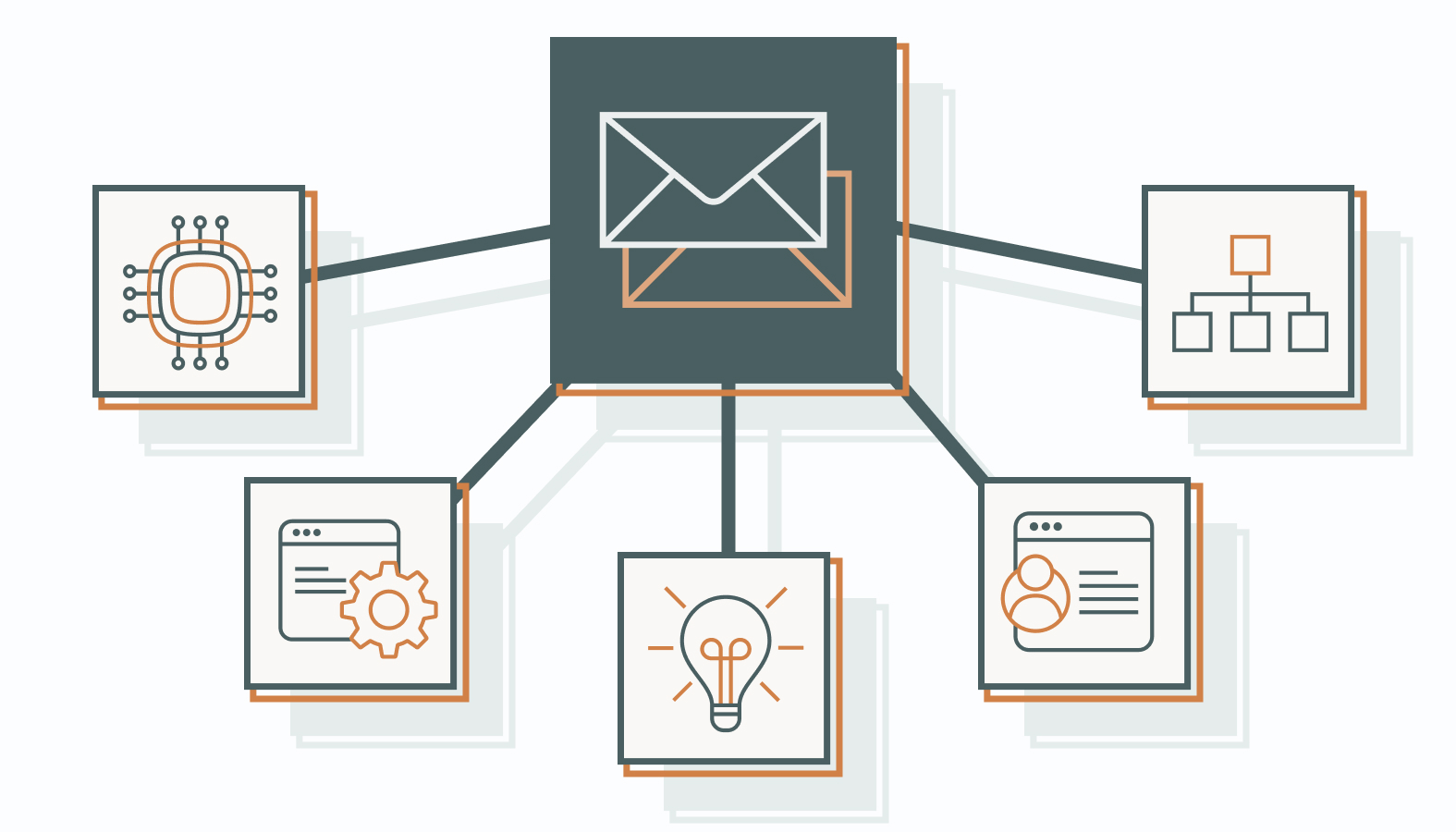Email marketing for SaaS has consistently driven results quietly, while other channels chase the latest trends. While the industry scrambles to embrace the newest platforms, email remains laser-focused on what truly drives results: acquiring users, guiding them through onboarding, fostering activation, and converting free trials into loyal, paying customers.
But here’s the catch: Generic emails no longer cut it. Today’s users are savvy, with inboxes overflowing; only emails that genuinely speak to their needs will break through the noise.
Many SaaS email strategies falter because they fail to evolve with the product. They rely too heavily on guesswork, overlooking crucial details such as lifecycle timing, segmentation, and behavioral automation.
This guide reveals what modern SaaS email marketing should encompass. It’s time to move past “batch and blast” methods and embrace customer-led flows and intelligent behavioral logic.
Continue reading to learn how to craft campaigns that grow organically with your business and align with your product’s journey. We’ll dissect strategies that drive user adoption, boost retention, and generate revenue without overwhelming your team or alienating your audience.
Maximize Your SaaS Growth with Email Marketing
Email marketing is a powerful tool for expanding your business and fostering stronger customer connections in the fast-paced SaaS industry. It’s about crafting messages that resonate, engage, and drive outcomes, nurturing loyalty and triggering genuine growth.
Understand the SaaS Customer Journey for Smarter Email Campaigns
The best SaaS email marketing strategy begins with understanding the customer journey. Every email should be carefully aligned with where the customer is at each stage, ensuring that your messages are relevant and timely.
This approach encourages meaningful action, guiding your customers toward the next step in their journey.
- Awareness: At this stage, your prospects are becoming aware that they have a problem. Your emails should focus on providing value, offering insightful resources, and delivering educational content. This is where you position your brand as the trusted expert who can solve their issue.
- Consideration: Now, your prospects are comparing their options. Craft targeted emails that highlight your product’s unique benefits, share real customer success stories, and offer expert guidance. This is your opportunity to demonstrate why your solution is the best choice for their needs.
- Decision: When prospects are ready to make a choice, it is crucial to act quickly and with precision. Send timely, persuasive emails with irresistible offers, such as limited-time deals, personalized demos, and free trials. Your call to action should guide them confidently toward the next step.
- Adoption: The job isn’t done once a user signs up. This is where the real work begins. Onboarding emails should be designed to guide new users through the setup process, introduce them to key features, and help them form habits that enable them to get the maximum value from your product.
- Retention: Keeping your users engaged is just as important as acquiring them. Your ongoing email strategy should include regular check-ins, feature updates, and personalized tips. The goal is to maintain a healthy relationship, positioning your emails as helpful rather than pushy.
- Advocacy: Turn satisfied customers into brand advocates. Ask for feedback, reward referrals, and highlight customer wins. When you build a community of loyal customers, they’ll help drive growth by spreading the word for you.
Mapping your emails to each stage of the customer journey ensures that every message works in harmony to move your audience closer to long-term success, ultimately fueling your SaaS growth.
Key Benefits of Email Marketing for SaaS
Email marketing remains a powerhouse for SaaS businesses, offering a significant return on investment (ROI) and unparalleled scalability.
Here’s why any SaaS business looking to thrive in a competitive landscape should master email marketing:
Cost-Effectiveness
Email marketing is the gold standard for maximizing ROI. It consistently outperforms other marketing channels, delivering high impact without the hefty price tag of traditional methods.
For SaaS businesses, it provides a cost-effective means of reaching a broad audience without incurring significant expenses.
Automating campaigns and personalizing content ensures every dollar spent works harder, allowing for substantial growth with lean resources.
Increased Engagement
Engagement is the lifeblood of any SaaS company. Creating compelling, tailored content ensures that you speak to and connect with your audience.
Segmenting your email lists based on user behavior and preferences enables you to deliver personalized content that resonates deeply.
Add dynamic elements and interactive features to keep your audience hooked, driving higher engagement rates with every message.
Customer Retention
Retaining customers is far more cost-effective than acquiring new ones, and email marketing plays a key role in this process.
Consistent communication through updates, feature announcements, and personalized offers strengthens the relationship between your product and its users.
This ongoing connection fosters a community around your product, helping to reduce churn while boosting customer loyalty.
Lead Nurturing
Converting prospects into paying customers is a delicate process. Email marketing enables you to nurture leads efficiently, guiding them through each stage of the sales funnel.
Personalize your messages based on user behavior and engagement to address pain points and highlight the value your solution brings.
When executed effectively, these tailored communications can significantly enhance your conversion rates.
Feedback Collection
Email isn’t just for promotion; it’s also a powerful tool for gathering insights.
Whether through surveys, polls, or direct requests for feedback, email marketing enables SaaS companies to gain insight into their customers’ minds.
This feedback is invaluable for refining your product and proactively addressing customer needs, and driving continuous improvements that keep your users satisfied.
Common Challenges and Solutions
While email marketing offers undeniable advantages, it’s not without its challenges.
Let’s explore how to overcome the common obstacles that can limit your success.
Deliverability Issues
A high ROI means nothing if your emails aren’t getting through. Low open rates and high bounce rates are warning signs of potential deliverability issues.
To prevent deliverability issues, regularly clean your email list, authenticate your domain, and monitor key metrics. These steps will ensure your messages hit the inbox, not the spam folder.
Low Engagement Rates
If your open rates are low, it’s time to rethink your strategy.
Dive into the data and assess factors like irrelevant content or poorly timed sends. Test various elements, such as subject lines, visuals, and sending times, to determine what resonates most effectively with your audience.
Optimization is an ongoing process, and tweaking these variables can lead to significant improvements.
Overcoming Spam Filters
Spam filters can kill your open rates, and worse, damage your sender reputation. To avoid this, steer clear of spammy language, ensure compliance with regulations, and make it easy for users to whitelist your email address.
Following these practices will keep your messages landing where they need to be: right in your audience’s inbox.
Maintaining a Consistent Sending Schedule
Consistency is critical. An unpredictable email schedule is a surefire way to lose your audience’s trust.
A well-planned content calendar ensures your communications remain timely and relevant.
Keep your brand at the forefront of your mind and set expectations for when your emails arrive, fostering a dependable relationship with your subscribers.
Email Content Creation
Content is king, but only if it speaks to your audience.
To maximize your email marketing efforts, focus on delivering valuable content, whether it’s educational material, product updates, or personalized recommendations.
A strategic review and refresh of your content plan ensures emails stay fresh, relevant, and engaging.
With the right strategy, email marketing becomes a fundamental part of your SaaS growth engine. Tackle the challenges, fine-tune your approach, and reap the rewards of deeper engagement, higher conversions, and loyal customers.
Build Your SaaS Email Marketing Plan
A well-crafted email marketing strategy is crucial for any SaaS company serious about hitting its strategic goals and driving growth.
By creating and executing a personalized email strategy, SaaS businesses can engage their audience, nurture leads, and retain loyal customers. This organized approach ensures every email campaign ties back to your broader business goals, making every message count.
1) Set Achievable Goals for Your Email Campaigns
You can’t hit a target if you don’t set one. For SaaS companies, this means defining specific, measurable goals that align with your broader business objectives.
Whether you’re aiming to improve retention, increase lead generation, or boost user engagement, clarity is key here.
If reducing churn is a priority, your email strategy should focus on enhancing the user experience and driving satisfaction.
Utilize key metrics, such as open rates, click-through rates, and conversions, to monitor progress, refine strategies, and ensure that your email campaigns directly contribute to your business’s success.
2) Segment Your Audience for Targeted Impact
Segmentation is the process of separating the target audience from the non-target audience in email marketing.
For SaaS companies, audience segmentation enables you to tailor your message to users based on their behavior, subscription level, or demographic data. The result? More relevant and personalized emails that will generate higher engagement and conversions.
Here’s how to get it right:
- Collect and Analyze Data: Use analytics tools to gather insights about your audience’s behavior, preferences, past interactions, and demographic information.
- Define Segments: Based on the data collected, define segments that make sense for your business, such as trial users, long-term subscribers, or users interested in specific features.
- Tailor Messages: Develop targeted messages for each segment, ensuring that content resonates with their particular needs and interests.
- Continuously Refine Segments: Don’t set and forget. Update your segments regularly to reflect new data and evolving business objectives.
3) Select the Best Tools for Effective Email Marketing
The right email marketing tools make a world of difference. When selecting a platform, consider key features such as CRM integration, ease of use, scalability, automation, and analytics.
Here’s a quick rundown on some popular tools for SaaS businesses:
- Mailchimp: Offers a comprehensive suite of features, including automation and analytics. It’s user-friendly and integrates well with various platforms. However, it may not be the best fit for extensive lists due to its pricing.
- HubSpot: Known for its robust CRM integration and advanced analytics capabilities. It’s ideal for businesses seeking an all-in-one marketing solution, although it can be complex for beginners.
- ActiveCampaign: Provides powerful automation features and detailed analytics. It’s ideal for companies wanting to implement sophisticated automation workflows, but it may require a learning curve.
- SendinBlue: Offers transactional email capabilities along with marketing automation. It’s budget-friendly for smaller businesses but may lack some advanced features found in more expensive tools.
Evaluate these tools based on your specific needs and business objectives to find the best fit for your SaaS company’s email marketing strategy.
4) Create a SaaS Email Marketing Calendar
A smart email calendar helps you stay on track and ensures your email campaigns remain consistent, relevant, and strategically aligned with your business goals. Start by identifying the key goals for each month or quarter, whether it’s boosting signups, improving onboarding, or highlighting new features.
Break down your calendar into campaign types:
- Promotions: Special offers, discounts, and time-sensitive deals
- Onboarding Sequences: Automated welcome emails and setup guides
- Retention Campaigns: Check-ins, loyalty programs, and educational content
- Product Updates: Highlighting new features, improvements, and bug fixes
- Special Events: Webinars, industry conferences, and holidays
Map these campaigns to specific weeks to ensure a balance of promotional, educational, and relationship-building emails.
Don’t overdo it. Timing and quality always trump quantity. Make room for flexibility to capitalize on real-time opportunities, such as customer feedback or emerging trends.
Be sure to test. A/B testing at least once a month will help you refine everything from subject lines to call-to-action buttons.
Finally, align your calendar with broader business initiatives, such as product launches, content marketing campaigns, or customer success milestones, so that email remains integrated with your SaaS growth strategy.
A well-structured calendar keeps your messaging timely, customer-centric, and impactful, helping you maximize results without last-minute scrambling.
Essential Email Types for SaaS Success
A well-rounded email strategy is essential for SaaS companies that want to engage customers at every stage of their journey, from that initial acquisition to ensuring long-term retention.
Different types of emails serve distinct purposes, ensuring that each touchpoint delivers value. Here’s a closer look at some of the key email types that should be part of your SaaS marketing toolkit:
Onboarding Emails
First impressions are everything, and onboarding emails are your opportunity to deliver just that. These emails are critical for guiding new users through the essential steps of using your service. It’s about making the onboarding process as smooth and informative as possible.
Excellent timing is necessary. Your emails should be delivered immediately after sign-up to capitalize on the user’s initial excitement and momentum.
A series of thoughtful emails can include a welcome message, setup instructions, and quick tips to ensure that users can hit the ground running. When executed correctly, onboarding emails can significantly enhance user activation and engagement.
Product Updates
Keeping your customers informed about new features, product improvements, or bug fixes is an absolute must.
Product update emails are essential for maintaining engagement and demonstrating to users that your service is continually evolving. These emails should be succinct, clear, and focused on how the new updates benefit your users. Use visuals and bullet points to break down the key details and make the information digestible.
When customers see that your service is constantly improving, they’ll feel confident about sticking with you.
Educational Content
Providing value through educational content teaches users how to effectively utilize your product while establishing your company as a trusted authority in the field.
Educational emails position your brand as a trusted resource, whether it’s a how-to article, an insightful webinar, or a case study. It allows you to help users maximize the value of your service and deepen their connection to your brand.
The more knowledge you share, the more empowered your users will be and the more likely they will stay.
Retention Emails
In an ideal world, once users start using your service, they remain engaged for the long term. However, in reality, user churn is a major concern for any SaaS company. Retention emails are designed to prevent that. These emails can include reminders of unused features, personalized check-ins, or celebratory messages for milestones, such as anniversaries.
Personalization is the key to making these emails resonate. By segmenting your user base based on activity and behavior, you can deliver content that feels relevant and valuable to each individual user, reducing the risk of churn.
Transactional Emails
While transactional emails might seem basic, they are absolutely critical to the user experience. These emails include order confirmations, password resets, and alert notifications. They not only provide essential information to users but also serve as an opportunity to reinforce your brand voice.
Ensure these emails are precise, professional, and reflect your brand’s values. Incorporating your branding into these communications fosters trust and reliability, making users feel confident in their interactions with your platform.
The correct email strategy focuses on sending the right messages at the right time. When done correctly, these emails form the backbone of a strong customer lifecycle strategy, keeping your users informed, engaged, and loyal.
Elevate Your SaaS Email Strategy with Advanced Tactics
Staying ahead in SaaS means abandoning outdated strategies. Advanced email marketing tactics enable you to engage with your audience more effectively and drive real, measurable results. It’s about diving deeper into your customer’s needs, delivering more tailored experiences, and ultimately, staying relevant in an ever-evolving market.
Ensure Compliance: Master GDPR, CAN-SPAM, and Privacy Laws in SaaS Email Marketing
SaaS companies that sidestep regulations such as GDPR, CAN-SPAM, and other privacy laws risk fines and significant damage to their reputation.
Smart businesses weave legal compliance into every email campaign.
- Start with clear opt-in practices. Under GDPR and other privacy laws, you must obtain explicit consent before sending marketing emails. Pre-checked boxes or vague permissions aren’t enough. Be transparent and straightforward about what users agree to, and always provide them an easy way out.
- Unsubscribe functionality is non-negotiable. CAN-SPAM mandates that every marketing email include a visible, working unsubscribe link, with requests honored within 10 business days. A seamless opt-out process isn’t just a legal requirement; it builds goodwill and reduces spam complaints, boosting your deliverability.
- Prioritize data protection at every stage. Safeguard personal data and be open about its usage. The GDPR grants users the right to request access to, correction of, or deletion of their personal data. Collaboration with legal and tech teams ensures airtight data handling policies, making compliance a smooth and integrated part of your email strategy.
Building compliant email marketing practices is more than avoiding penalties. It must reinforce user trust, protect your brand, and create a sustainable, high-performing strategy in an increasingly privacy-conscious world.
Master Personalization to Increase Engagement
Personalization in email marketing goes beyond inserting a first name. It’s about delivering the right content at the right time, based on user behavior and preferences. When done right, it turns a one-size-fits-all approach into a tailored experience that deeply resonates with each recipient.
To integrate personalization into your email campaigns, consider these strategies:
- Utilize User Data: Collect and analyze data on user interactions, purchase history, and preferences. This information can help create segmented lists that allow for more targeted messaging.
- Craft Tailored Messages: Develop content that resonates with specific segments of your audience. For example, send personalized recommendations based on past purchases or usage patterns.
- Dynamic Content: Utilize dynamic content blocks to tailor specific sections of your emails to different segments, ensuring each recipient receives the most relevant information.
Optimize Your Campaigns with A/B Testing
A/B testing is no longer optional — it’s a necessity. Testing is the go-to tool for refining campaigns and understanding what drives results.
Whether it’s subject lines, CTAs, or images, A/B testing helps you figure out what truly works by comparing different versions of your emails and measuring their performance.
To run a practical A/B test, start by identifying which elements you want to test. Is it the subject line or the email copy that grabs attention? Select a sample size that is large enough to provide meaningful insights, and then send the variants to different segments.
Once the tests are complete, dig into the data. Which version delivered the best results? Use those findings to optimize future campaigns, focusing on the elements that drive the highest engagement.
Empower Your Emails with Automation and AI
Automation and AI are transformative tools that streamline your email strategy, delivering smarter and more timely communications. From predicting user behavior to sending personalized emails at scale, these technologies enhance the effectiveness of your campaigns.
- Predictive Analytics: By anticipating what users need or do next, you can proactively reach out with highly relevant content.
- Machine Learning-Driven Content Suggestions: Implement machine learning algorithms to suggest content based on user interests, enhancing personalization.
- Behavioral Triggered Emails: Whether it’s a cart abandonment email or a follow-up after a product browse, these automatic messages ensure you’re always in the right place at the right time.
Prevent Churn and Win Back Dormant Users with Smart Email Strategies
In SaaS, keeping customers engaged is the key to success, but even the best services face challenges with customer churn. The key is using targeted, strategic email campaigns to prevent churn and bring back dormant users.
Proactively Address Churn with Strategic Emails
Don’t wait for users to slip away—be proactive. Monitor user behavior closely for signs of potential churn, such as decreased frequency of logins or declining usage of features.
Once you spot these early warning signs, send personalized emails that encourage re-engagement. Whether you highlight unused features or provide tips for maximizing product value, the goal is to keep users hooked before they disengage.
Feedback requests also play a significant role in preventing churn. Asking users for their input, especially when you notice a drop-off in usage, shows you value their experience and provides invaluable insights into improving your offering.
Win Back Dormant Users with Personalized Campaigns
Even with the best retention strategies, some users will inevitably become inactive. A well-executed win-back campaign can breathe new life into these accounts.
Forget the generic “We miss you” emails. Tailor your messages to each user’s past behavior, remind them of the value they gained from your product, and show them what’s new since they last engaged. A timely incentive, like a limited-time discount or an exclusive consultation, can make re-engaging feel like a no-brainer.
Timing is everything. Based on your product’s usage patterns, start reaching out after 30 to 60 days of inactivity. And don’t make the process harder than it needs to be. Include easy calls to action, one-click login links, and clear paths back to your platform.
A Two-Pronged Strategy for Long-Term Growth
Combining proactive churn prevention with win-back efforts creates a seamless, full-lifecycle engagement strategy.
You drive retention and revenue by staying in touch with active users and reaching out to dormant ones. This approach keeps customers around and creates long-term loyalty by demonstrating that you understand their needs and value their business.
Measure Success Through Detailed Campaign Analysis
Measuring the success of your email campaigns isn’t a guessing game. It’s a data-driven science. Focus on the metrics that matter—open rates, click-through rates, conversions, and ROI.
To effectively measure success:
- Use Analytical Tools: Employ tools to gather detailed performance data. Platforms like Google Analytics and Mailchimp provide the insights you need to understand what’s working and what needs adjustment.
- Interpret Data: Analyze the data to understand what is working and what needs improvement. Look for patterns and trends that can guide your strategy.
- Translate Insights into Action: Don’t just observe; act with the data in hand. Apply what you’ve learned to optimize future campaigns and make informed decisions that drive higher engagement and conversions.
By mastering these advanced tactics, you’ll take your SaaS email strategy from basic to exceptional, giving your business the edge it needs to thrive in today’s competitive market.
Predict the Future: Emerging Trends in SaaS Email Marketing
The future of SaaS email marketing is moving rapidly, and those who adopt the latest trends now will position themselves for a significant competitive advantage. As technology evolves and user expectations rise, savvy SaaS brands are refining their strategies to stay ahead of the curve.
Here are the top trends you’ll want to watch and act on now.
Hyper-Personalization Powered by AI
Basic segmentation is out. AI-driven hyper-personalization is the new gold standard. Marketers now have the power to tailor content based on real-time user behavior, preferences, and lifecycle stages.
Forget sending the same onboarding sequence to every new user—future campaigns will dynamically adjust based on each individual’s actions. This ensures every email feels timely, relevant, and, most importantly, personal.
Dynamic Content That Adapts in Real Time
Dynamic email content is gaining serious traction. Think live data—usage stats, event countdowns, personalized product recommendations—embedded directly into emails. This makes your messages more interactive and keeps the experience feeling fresh.
It’s not just an email anymore; it’s a live conversation that responds to the customer, driving engagement like never before.
Predictive Analytics for Smarter Campaigns
Predictive analytics is transforming the game. SaaS companies are leveraging data to anticipate customer needs before they even vocalize them.
By analyzing patterns in usage data, engagement, and demographics, you can forecast behaviors like churn risk, upsell potential, and feature adoption. This proactive approach enables campaigns to pivot in real time, improving retention and lifetime value.
Tighter CRM and Email Integration
Siloed marketing and sales data? That’s old school. The most effective SaaS email strategies are now built on tight CRM and email marketing tool integrations.
With customer profiles constantly updated, automating personalized journeys becomes a breeze. Plus, this integration enhances lead scoring, engagement tracking, and cross-functional collaboration across departments, ensuring every team member is on the same page.
The Shift to Orchestrated Conversations
Looking ahead, SaaS email marketing will shift from blasting messages to orchestrating intelligent, individualized conversations at scale.
By adopting these trends early, SaaS companies can create experiences that feel more human-powered by cutting-edge technology and data. It’s the kind of strategy that deepens customer loyalty, drives growth, and future-proofs your marketing against the competition.
Successful Email Campaigns from Leading SaaS Companies
Strategic email marketing is a game-changer for SaaS businesses, offering a direct line to engage users, boost retention, and fuel growth.
Tailored campaigns allow companies to connect with their audience in a way that feels personal, delivering content that clicks and sparks action.
Here’s a look at how top SaaS players are using email marketing to meet their goals and set the bar for what’s possible.
HubSpot’s Winning Strategies in Email Re-engagement
HubSpot’s approach to re-engaging inactive users is a standout example of personalized email marketing done right. They segment their user base by activity level, ensuring that the messages they send are directly relevant to each group’s specific needs.
Whether offering free resources or showcasing new features, HubSpot’s emails aim to reconnect users by addressing why they drifted away.
The results speak for themselves: higher engagement rates and lower churn. HubSpot’s success comes down to one thing: personalization. By making users feel understood and valued, they create an email experience that resonates.
SaaS companies should consider this strategy and leverage their own user data to craft messages that resonate with individual motivations and address specific barriers.
Slack’s Effective Onboarding Email Techniques
Slack has mastered the art of onboarding through email. Their campaigns are timed to coincide with key moments in the user journey, delivering essential content at just the right time. Step-by-step guides, feature explanations, and best practices are seamlessly integrated into these emails, ensuring users have everything they need to hit the ground running.
The result? Impressive user activation rates. By providing helpful, easy-to-digest content, Slack ensures that new users quickly become comfortable with the platform. Timely emails, engaging visuals, and a focus on user benefits are key ingredients that make this strategy work.
Canva’s Engaging Product Update Communications
Canva nails product update emails by combining useful content with compelling visuals. Their emails are informative and designed to grab attention. Bold graphics paired with concise text highlight the latest features, making it clear how users can benefit from these updates.
This approach has driven user engagement, encouraging recipients to explore and utilize new tools.
Canva’s success shows that effective messaging paired with visual appeal is a winning formula for keeping users engaged. It’s not just about informing users—it’s about keeping them excited and involved.
Dropbox’s Feature Adoption Enhancement Emails
Dropbox takes a strategic approach to getting users to fully utilize features they may not be using. Their feature adoption emails are carefully crafted to highlight the benefits of underused tools, ensuring users understand how they can enhance their workflows by integrating them into their daily routines.
The outcome? Increased feature usage and glowing user feedback. Dropbox’s success lies in its focus on user education, spotlighting lesser-known features that increase overall product value and boost customer satisfaction.
Other SaaS companies can adopt this model by identifying underutilized features and showcasing their full potential.
Zendesk’s Inspirational Customer Success Stories
Zendesk knows that real-life success stories are powerful tools for building trust and inspiring action. Their emails feature customer success stories, showcasing how businesses have leveraged Zendesk’s platform to achieve tangible results.
These stories inform and motivate users to explore new features and deepen their engagement with the platform.
By weaving these success stories, Zendesk strengthens its connection with customers, proving that others have found success with their tools. This type of content resonates deeply, offering both inspiration and credibility.
SaaS companies seeking to enhance their email marketing efforts could incorporate customer success stories into their strategies, leveraging the power of social proof to foster further engagement.
Enhance, Engage, and Excel with Effective SaaS Email Campaigns
Targeted email campaigns are more than just a tool for engaging users—they are a powerful driver of every phase of the customer journey for SaaS businesses.
From the first touchpoint through onboarding, retention, and feature adoption, strategic email marketing is crucial for cultivating meaningful relationships and driving long-term growth.
Delivering personalized, timely, and relevant content is how SaaS companies transform casual users into loyal advocates. Staying sharp means committing to constant evolution: tracking emerging trends, adopting new technologies, and staying in tune with shifting customer expectations.
Flexibility and creativity are paramount in today’s fast-paced market. SaaS businesses that invest in smarter email strategies position themselves to deliver unforgettable user experiences and build growth that lasts.
Ready to Elevate Your SaaS Email Game?
You’ve seen how top SaaS brands turn strategic emails into growth engines. Now it’s your turn. With the right insights and a few targeted moves, you can craft campaigns that resonate, activate, and retain your users like never before.
If you’re ready to refine your strategy and tailor it to your business goals, let’s connect. Our team is here to dive into your challenges, share ideas, and collaborate on a plan that puts your email marketing miles ahead of the competition.
Schedule a candid conversation with one of our experts. » No pressure, just a chance to swap insights and start building a stronger future for your SaaS marketing.

